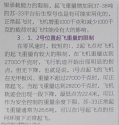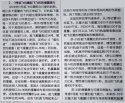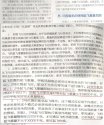A few years back in 2012 we had a great translation of a series of magazine scans that seemed to show in quite a bit of detail about how much Su-33 could take off from a Kuznetsov class carrier's ski jump at different positions under different conditions.
Unfortunately, the series of posts were lost on SDF because apparently the carrier thread at the time accidentally got deleted, but fortunately the posts (translation done by no_name, at the time) were cross posted to a different forum, here:
I'm going to repost the entire thing here on SDF, in a dedicated thread for ease of reference in future (goodness knows I've tried to find this information before, in the past on many an occasion), and also so it can turn up easily in future when one puts in the right search terms.
舰载武器军事评论第10期,《苏-33/歼-15舰载战斗机航母起飞性能研究》一文,详细地给出了苏-33/歼-15的性能和使用方式,当发动机推力是12800公斤时,零风速,长点,无任何飞行轨迹下降,32.8吨, 最大38吨,短点,无任何飞行轨迹下降,27吨,最大28.2吨,25节甲板风,110米以上的滑跑距离, 苏-33/中秋以最大重量32000千克可以很轻松地直接起飞,在有25节甲板风的情况下,苏-33/中秋可以在1、2号起飞位置,110米的滑跑距离提供类似于无风状态195米的3号起飞位置同样的起飞性能 ,这样的起飞距离和起飞效果与蒸汽弹射器提供的能力非常接近,如果发动机推力增加到14000公斤以上,将 完胜蒸气弹弓。
文中还详细地分析了特殊情况及安全余度,包括推力损失、单发安全、单发起飞,以及这些情况对舰载机实际在航 母上使用时所产生的影响,并给出了苏33/中秋在航母上初级飞行员作训模式、正常作训模式、1、2号位置的紧急起飞模式下的使用起飞重量 范围以及苏-33/中秋的几个典型作战状态等内容。
Assuming 12800Kg thrust, 0 knot headwind: From long take-off point can take-off with 32.8 tonnes, maximum 38 tonnes. From short take-off point can take-off with 27 tonnes, 28.2 tonnes max. At 25knots headwind, Su-33 can easily take-off at max load of 32000kg from 110m. Taking off from 110m under 25 knots headwind gives the same condition as taking off from 195m under no wind. (so the extra 85m length translates to 25 knots more speed). This kind of take-off capability is very close to that provided by conventional steam catapult. IF engine thrust can be improved to 14000kg the performance will be superior to steam catapult.


Right column top part: Some basic combat loadings for Su-33 fighter jet.
Su-33 fighter was developed 20 years ago, its electronics was outdated, lacking multirole capabilities, and lacking weapons customised specifically for the aircraft. Since 2010, Russia has embarked on a mid life upgrade and modernising program for its remaining Su-33s in service, adding the capability to fire R-77 medium range AAM, KH-65/KH-35 multirole anti-ship/anti-ground cruise missiles, and can also carry LGB-500/1500 laser guided bombs. (and the aiming pod for it)
1.
TOW : 26000kg
Fuel : 5700KG
Payload : 4 R-73 + 4 R-77.
Range : 1900km.
Flight time : 2hr 31 min.
Combat radius : 660Km
Combat time (on station time?) at 250km is 1hr 10 min.
2.
TOW : 27000kg
Fuel : 6300kg fuel
Payload : 4 R-73 + 2 R-77 + 1 KH-65E
Range : 2100km
Flight time : 2hr 50min
Combat radius : 710km
3.
TOW : 30500kg
Fuel : 9300kg fuel
Payload : 4 R-73 + 8 R-77
Range : 3000km
Flight time : 4hr 23min
Combat radius : 1280km
Combat time (on station time?) is 2hr 30min at 400km
4.
TOW : 30500kg
Fuel : 5700kg
Payload : 22 x 250kg bombs i.e. 5500kg
Range : 1700km
Flight time : 2hr 3min
Combat radius : 700km
5.
TOW : 31900kg
Fuel : 9300kg
Payload : 4 R-73 + 2 R-77 + 4 KH-31P
Range : 3000km
Flight time : 4hr 40min
Combat radius : 1220km
6.
TOW : 31400kg
Fuel : 9300kg
Payload : 4 R-73 + 2 LGB-500 + 1 LGB-1500 + 1 pod
Range : 2900km
Flight Time : 4hr 2min
Combat radius : 1250km
===============
Right column bottom part:
Basic stats for Su-33/J-15
length: 21.94m
wing span:14.7m
height:5.93m
wing area:62 m^2
empty weight:18400kg
standard fuel capacity:5700kg
maximum internal fuel capacity:9300kg
maximum TOW:32800kg
take-off speed:240-302 km/h (airport condition)
maximum landing weight:26600kg
normal landing weight:23300kg
landing speed:220-260km/h (airport condition)
maximum flight height:17000m
maximum speed:Mach 2.13
maximum climb rate:325m/sec
Maximum g:8g/-3g
hardpoints:12
maximum external carrying weight:8000/6500kg
parking width:7.8m
engines:2*AL-31F-3
Maximum thrust:2*7600kg, 2*12800kg with afterburner
Continued below...
Unfortunately, the series of posts were lost on SDF because apparently the carrier thread at the time accidentally got deleted, but fortunately the posts (translation done by no_name, at the time) were cross posted to a different forum, here:
I'm going to repost the entire thing here on SDF, in a dedicated thread for ease of reference in future (goodness knows I've tried to find this information before, in the past on many an occasion), and also so it can turn up easily in future when one puts in the right search terms.
舰载武器军事评论第10期,《苏-33/歼-15舰载战斗机航母起飞性能研究》一文,详细地给出了苏-33/歼-15的性能和使用方式,当发动机推力是12800公斤时,零风速,长点,无任何飞行轨迹下降,32.8吨, 最大38吨,短点,无任何飞行轨迹下降,27吨,最大28.2吨,25节甲板风,110米以上的滑跑距离, 苏-33/中秋以最大重量32000千克可以很轻松地直接起飞,在有25节甲板风的情况下,苏-33/中秋可以在1、2号起飞位置,110米的滑跑距离提供类似于无风状态195米的3号起飞位置同样的起飞性能 ,这样的起飞距离和起飞效果与蒸汽弹射器提供的能力非常接近,如果发动机推力增加到14000公斤以上,将 完胜蒸气弹弓。
文中还详细地分析了特殊情况及安全余度,包括推力损失、单发安全、单发起飞,以及这些情况对舰载机实际在航 母上使用时所产生的影响,并给出了苏33/中秋在航母上初级飞行员作训模式、正常作训模式、1、2号位置的紧急起飞模式下的使用起飞重量 范围以及苏-33/中秋的几个典型作战状态等内容。
Assuming 12800Kg thrust, 0 knot headwind: From long take-off point can take-off with 32.8 tonnes, maximum 38 tonnes. From short take-off point can take-off with 27 tonnes, 28.2 tonnes max. At 25knots headwind, Su-33 can easily take-off at max load of 32000kg from 110m. Taking off from 110m under 25 knots headwind gives the same condition as taking off from 195m under no wind. (so the extra 85m length translates to 25 knots more speed). This kind of take-off capability is very close to that provided by conventional steam catapult. IF engine thrust can be improved to 14000kg the performance will be superior to steam catapult.


Right column top part: Some basic combat loadings for Su-33 fighter jet.
Su-33 fighter was developed 20 years ago, its electronics was outdated, lacking multirole capabilities, and lacking weapons customised specifically for the aircraft. Since 2010, Russia has embarked on a mid life upgrade and modernising program for its remaining Su-33s in service, adding the capability to fire R-77 medium range AAM, KH-65/KH-35 multirole anti-ship/anti-ground cruise missiles, and can also carry LGB-500/1500 laser guided bombs. (and the aiming pod for it)
1.
TOW : 26000kg
Fuel : 5700KG
Payload : 4 R-73 + 4 R-77.
Range : 1900km.
Flight time : 2hr 31 min.
Combat radius : 660Km
Combat time (on station time?) at 250km is 1hr 10 min.
2.
TOW : 27000kg
Fuel : 6300kg fuel
Payload : 4 R-73 + 2 R-77 + 1 KH-65E
Range : 2100km
Flight time : 2hr 50min
Combat radius : 710km
3.
TOW : 30500kg
Fuel : 9300kg fuel
Payload : 4 R-73 + 8 R-77
Range : 3000km
Flight time : 4hr 23min
Combat radius : 1280km
Combat time (on station time?) is 2hr 30min at 400km
4.
TOW : 30500kg
Fuel : 5700kg
Payload : 22 x 250kg bombs i.e. 5500kg
Range : 1700km
Flight time : 2hr 3min
Combat radius : 700km
5.
TOW : 31900kg
Fuel : 9300kg
Payload : 4 R-73 + 2 R-77 + 4 KH-31P
Range : 3000km
Flight time : 4hr 40min
Combat radius : 1220km
6.
TOW : 31400kg
Fuel : 9300kg
Payload : 4 R-73 + 2 LGB-500 + 1 LGB-1500 + 1 pod
Range : 2900km
Flight Time : 4hr 2min
Combat radius : 1250km
===============
Right column bottom part:
Basic stats for Su-33/J-15
length: 21.94m
wing span:14.7m
height:5.93m
wing area:62 m^2
empty weight:18400kg
standard fuel capacity:5700kg
maximum internal fuel capacity:9300kg
maximum TOW:32800kg
take-off speed:240-302 km/h (airport condition)
maximum landing weight:26600kg
normal landing weight:23300kg
landing speed:220-260km/h (airport condition)
maximum flight height:17000m
maximum speed:Mach 2.13
maximum climb rate:325m/sec
Maximum g:8g/-3g
hardpoints:12
maximum external carrying weight:8000/6500kg
parking width:7.8m
engines:2*AL-31F-3
Maximum thrust:2*7600kg, 2*12800kg with afterburner
Continued below...







